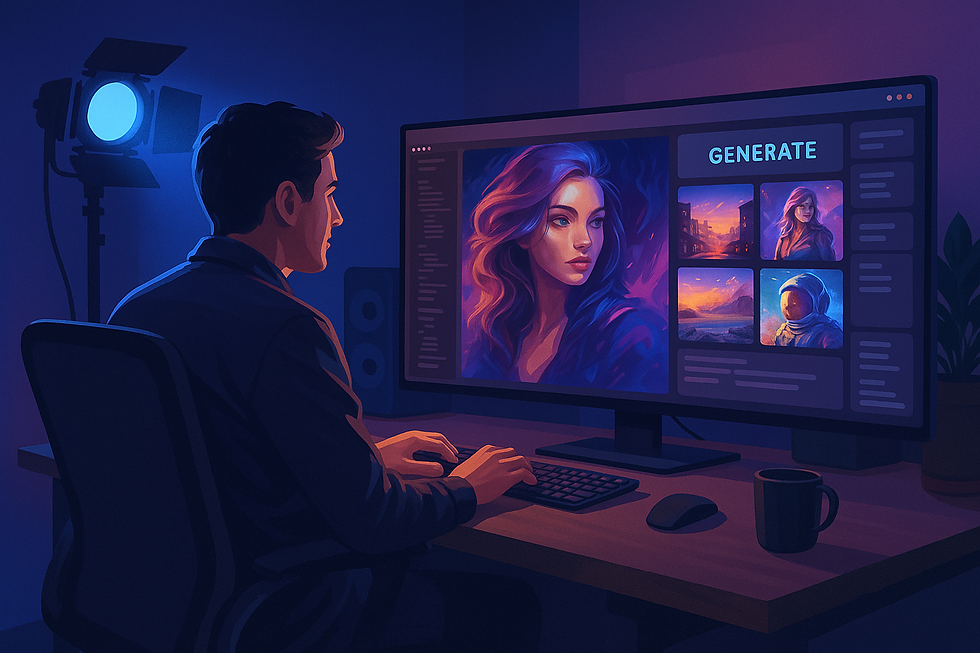AI Studios: Generative Tools in Media & Entertainment
- Art of Computing

- Aug 20
- 2 min read
At NAB 2025, artificial intelligence was no longer the sideshow. It sat firmly at the centre of production workflows, not as a novelty but as an operational standard. Studios, broadcasters, and content creators treated AI as a dependable part of their production stack, particularly for post-production automation, real-time localisation, and creative generation.

Post-Production on Autopilot
AI is now embedded in editing suites and asset management systems, handling tasks that once took teams days or weeks. Scene detection, dialogue clean-up, background noise removal, and automated colour matching have become push-button processes.Instead of AI being a trial feature or a bolt-on plug-in, production houses showcased fully AI-integrated pipelines, where raw footage moves directly into systems capable of preparing near-final edits. Editors now focus on fine-tuning rather than trawling through footage.
Real-Time Localisation
Global audiences have driven demand for instant, accurate localisation. At NAB, the most talked-about demonstrations showed AI generating live subtitles, dubbing voices in multiple languages, and even matching lip movements in real time.This has redefined international release schedules. A series can debut worldwide in dozens of languages simultaneously, without the traditional lag between original broadcast and dubbed versions. The new challenge isn’t creating localised content, it’s deciding how fast to release it.
Generative Creativity in Practice
Generative AI tools have moved from experimental to practical. Studios are now using them for concept art, set extension, and even creating photorealistic background characters to populate scenes.Where once AI-generated visuals were a proof-of-concept curiosity, now they’re part of everyday creative decision-making. Directors are using AI to mock up complex shots in pre-production and refine them during filming. Post teams use generative models to fill gaps in footage, create alternate versions of scenes, or extend environments without costly reshoots.
From Novelty to Necessity
The shift at NAB 2025 was clear: AI in media is no longer about "if" but "how". The industry has moved past debating its legitimacy and is now optimising its application.For many studios, the conversation has changed from “should we try AI?” to “how do we integrate it across every stage of production?” The tools have matured, workflows have adapted, and the creative boundaries are expanding in directions that would have been impossible even two years ago.
Related Articles
These articles connect well to this piece and help form your internal AI cluster:
Breaking the Grind: How AI Solves Everyday Business Bottlenecks – AI freeing people from repetitive work, removing barriers to creativity.
Custom AI Workflows for Print Companies: Saving Time, Reducing Waste, Improving Margins – Practical AI supporting industry tasks and improving efficiency.
Custom AI Workflows That Cut Time on Repetitive Tasks and Improve Accuracy – How AI handles repetitive tasks and improves result reliability.




Comments